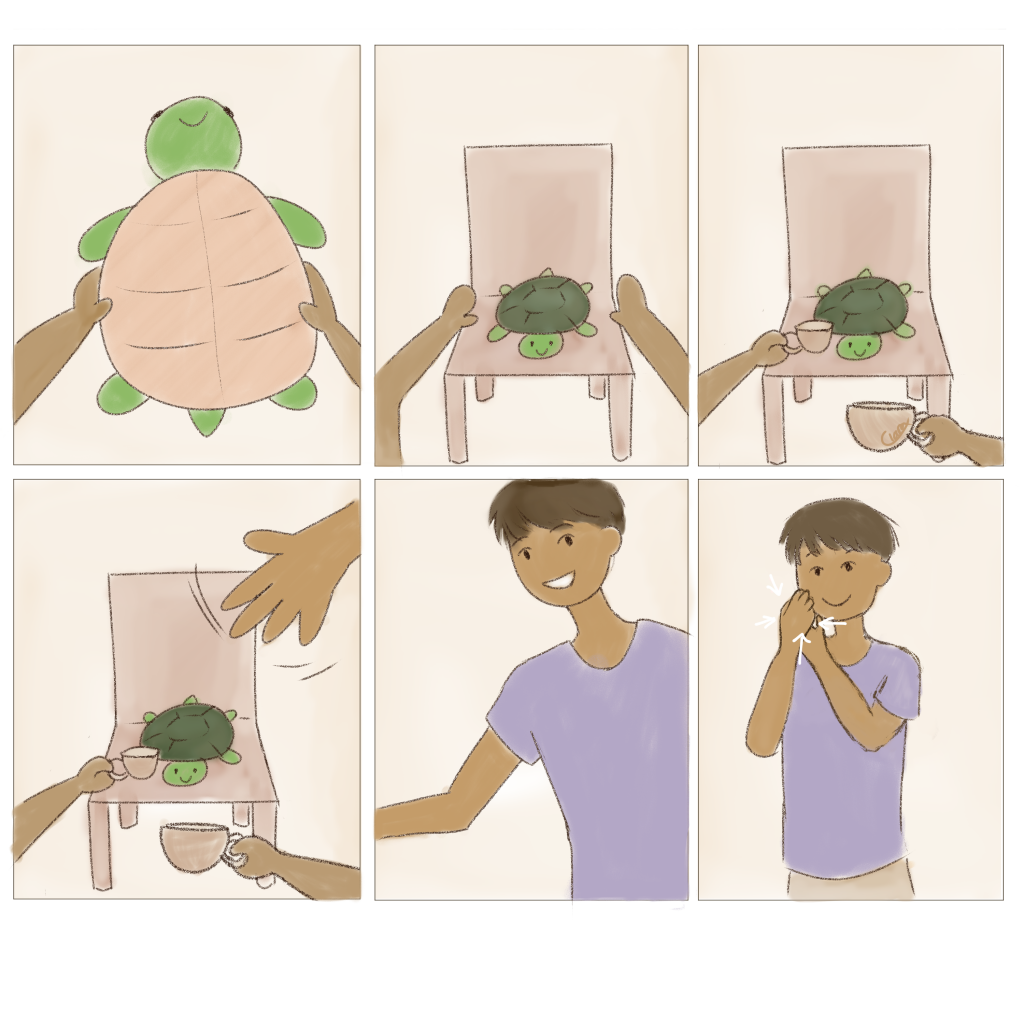What is the best way to start a conversation in sign language with a Deaf baby?

When someone is in another room, behind a closed door, you wouldn’t just start talking to them from where you are. You would, instead, go over to them. You would get into their ‘auditory field’ before starting to talk. An ‘auditory field’ is the area around ourselves where we can hear sounds.
When the language we are using is a sign language, we have to consider the ‘visual field’ instead. This is the area we can see at any moment in time. If a child is concentrated, playing with a toy in front of her, signing to her from outside her visual field from the other end of the living room is like talking to someone in another room behind a closed door or like talking to someone absorbed in the music from their headphones.
Caregivers can attract Deaf* children’s attention by intervening in their field of vision. It can be a hand wave or a whole body duck to the child’s view. Or something creative, like fingers walking into the child’s view. Once the spotlight is on the caregiver, they can sign away!
* There are many terms you may have seen used to refer to Deaf people. One of them is “hearing impaired”. This term was created by the hearing community, and tends to emphasize disability (impairment). The Deaf community prefers to be addressed as “Deaf” (with a capital “D”). “Deaf” refers directly to signers, as a linguistic community. It is the equivalent of saying “Anglophone people” or “Francophone people”. The lower case word “deaf” is used to refer to the medical condition, regardless of whether the individual signs or not.
The scientific sources for our comic:
Bailes, C. N., Erting, C. J., Erting, L. C., & Thumann-Prezioso, C. (2009). Language and literacy acquisition through parental mediation in American Sign Language. Sign Language Studies, 9(4), 417-456.
The first author to use “Deaf” rather than “deaf”:
Woodward, J. C. (1972). Implications for sociolinguistic research among the deaf. Sign Language Studies, (1), 1-7.
